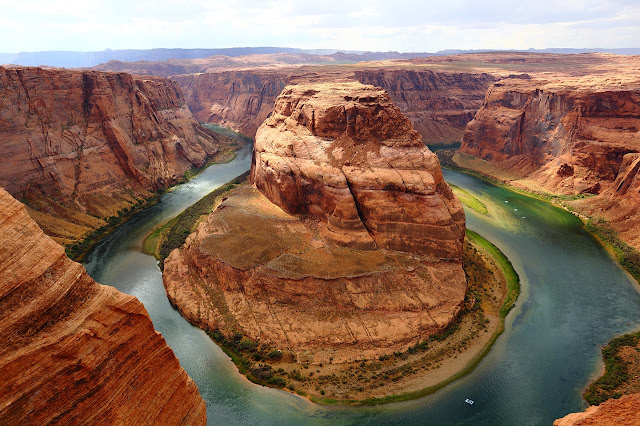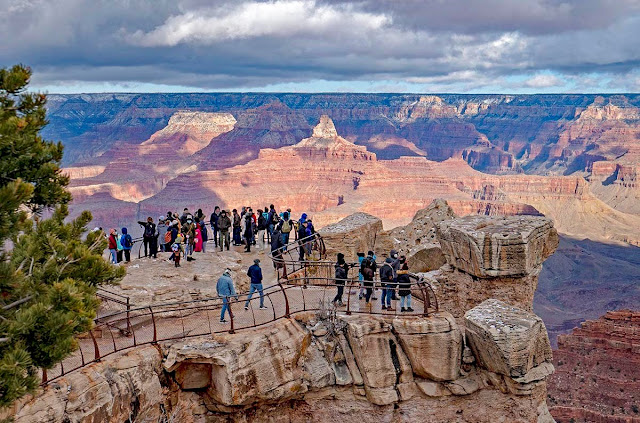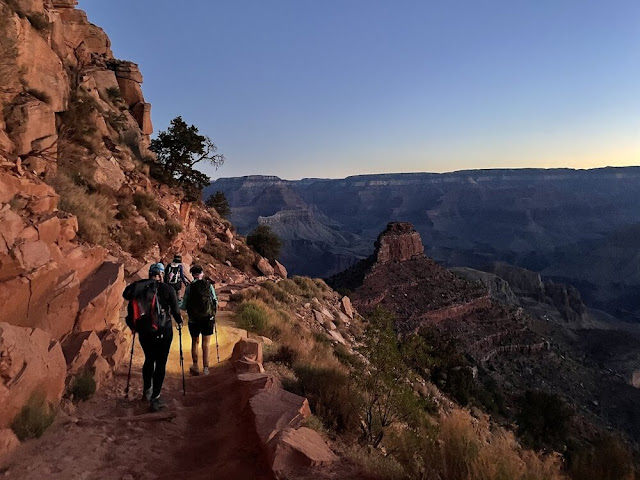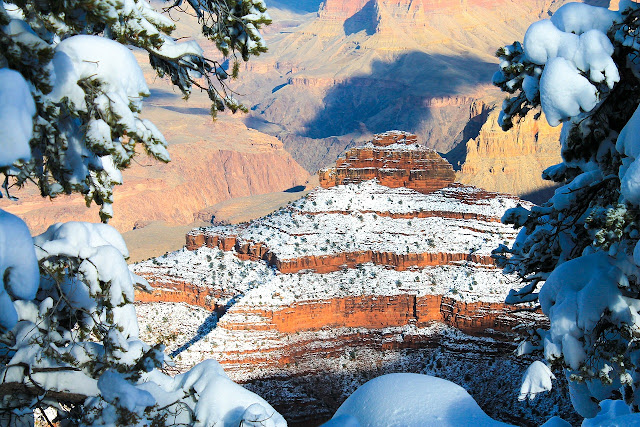Grand Canyon National Park Canyon Beautiful Places in the World / Best Places to Visit in the World
Grand Canyon National Park is a vast natural wonder located in the state of Arizona in the United States. It is a steeply sloping canyon carved over millions of years by the Colorado River. This valley is known for its breathtaking beauty and is one of the most famous tourist destinations in the world.

Here are some key facts about Grand Canyon national park
Size and Geography: Grand Canyon National Park is approximately 277 miles (446 kilometers) long, up to 18 miles (29 kilometers) wide, and reaches a depth of more than 6,000 feet (1,800 meters). It is divided into the North Rim and the South Rim, with the South Rim being the most accessible and popular for visitors.
Location: Grand Canyon National Park is located in northern Arizona, United States. It is a part of the Colorado Plateau and lies entirely within the Grand Canyon National Park.

Formation: Grand Canyon National Park was formed by billions of years of erosion by the Colorado River. The layers of sedimentary rock exposed in the canyon walls provide a geological record of Earth’s history.
National Park: Grand Canyon National Park was established in 1919 and covers an area of approximately 1,217,262 acres (4,926 square kilometers). It is managed by the National Park Service and attracts millions of tourists every year.

Scenic Views: Grand Canyon Rim offers breathtaking views from a variety of viewpoints. Some of the most popular viewpoints include Mather Point, Yavapai Point, and Desert View. The colors and textures of the canyon walls change throughout the day, making for stunning views at sunrise and sunset.
Hiking and Outdoor Activities: The Grand Canyon, the best travel destination in the world, offers numerous hiking trails at different skill levels. The most famous trail is the Bright Angel Trail, which descends the Colorado River. Other activities include mule rides, river rafting, camping and helicopter tours.
Hiking and outdoor activities
Native American Heritage: The Grand Canyon is of great cultural significance to Native American tribes including the Havasupai, Hualapai, Navajo and Hopi. These tribes have a deep historical connection to the land and provide cultural experiences and tourism in the park.
Wildlife: The Grand Canyon is home to various species of plants and animals. Some commonly seen animals include mule deer, California condor, bighorn sheep, and various reptiles. The park provides habitat for many species due to its diverse altitudes and ecosystems.
Read more…

Weather: The Grand Canyon experiences a wide range of weather throughout the year. Summer (June to August) is hot on the valley floor but cool at higher elevations, with temperatures ranging from 70°F to 100°F (21°C to 38°C). Winters (December to February) can be cold, with temperatures ranging from 20°F to 50°F (-7°C to 10°C) on the shore, and much colder temperatures in the lower reaches. Spring and fall offer more moderate temperatures.
Among the world’s best travel destinations, it is important to prepare appropriate clothing, water, and supplies when visiting the Grand Canyon, as the weather can change and the canyon trails can be challenging. Furthermore, following the park’s guidelines for responsible tourism and respecting the natural environment is important to preserve this unique and fragile ecosystem.
conclusion
As we conclude our journey through the most frequently asked questions about Grand Canyon National Park, we hope that this guide has helped anyone planning to go on an adventure exploring this natural wonder. Has provided a comprehensive and engaging resource for. The Grand Canyon promises an unforgettable experience for those who want to see its eternal beauty.
Frequently Asked Questions (FAQs)
A. How deep is the Grand Canyon?
The Grand Canyon reaches an impressive depth of approximately 6,093 feet (1,857 m) at its deepest point. This breathtaking depth highlights the geological wonders that have been imprinted on the Earth over millions of years.
B. Are guided tours available?
Absolutely! Grand Canyon National Park offers a variety of guided tours to suit a variety of preferences. From informative bus tours along the shore to adventurous hiking tours and even scenic helicopter tours, there is a guided experience for every type of explorer.
C. What wildlife can be seen?
The Grand Canyon is a haven of diverse wildlife. Keep your eyes peeled for majestic California condors soaring overhead, mule deer grazing along the banks, and elusive bighorn sheep roaming the rugged terrain. Birds, squirrels, and even the occasional elk contribute to the rich makeup of valley life.
D. Can I camp inside the park?
Absolutely! Camping within Grand Canyon National Park is a unique experience. There are designated campgrounds on both the North and South Rims, allowing you to soak in the natural surroundings and watch the canyon change with the changing light.
E. Are there visitor centers with information?
Yes, the Grand Canyon is well equipped with visitor centers that provide a wealth of information. The knowledgeable staff can guide you on trail maps, park history and current conditions. This is a great starting point to ensure you get the most of your Grand Canyon adventure.
If you have any more questions or anything else you’d like to know, don’t hesitate to ask!
Thanks for looking! I hope you enjoyed this Grand Canyon trekking guide from (Grand Canyon National Park).
Don’t forget to check out my guide to the (thelonelytraveler) here before you go!
happy travels!
